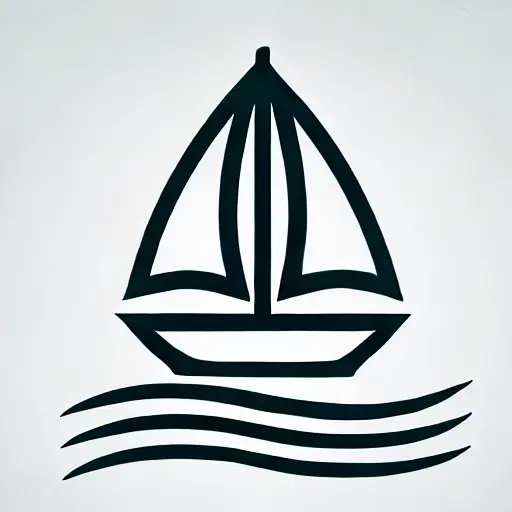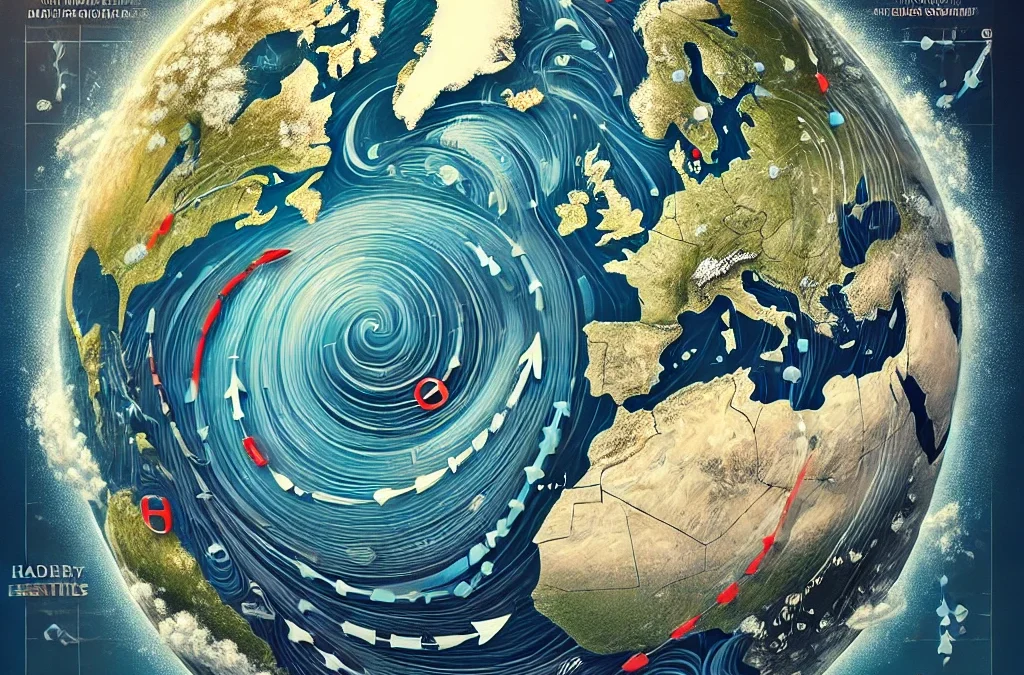The Azores High: Weather and Sailing Between the Canary Islands and the Azores
When embarking on a sailing trip from the Canary Islands to the Azores in December, understanding the weather is essential for a safe and enjoyable journey. One of the most significant weather phenomena influencing the route is the Azores High—a stable subtropical high-pressure system that plays a pivotal role in shaping the weather of the North Atlantic. In this article, we’ll explore the origin and dynamics of the Azores High, its global significance, and how it impacts sailing conditions between the Canary Islands and the Azores, particularly during the winter months.
lobal Weather Patterns: The Role of the ITCZ, Hadley Cells, and the Azores High
The Earth’s weather systems are driven by solar heating, which warms the surface most intensely near the equator. This leads to a permanent low-pressure zone called the Intertropical Convergence Zone (ITCZ), where the trade winds from the Northern and Southern Hemispheres meet. The ITCZ is marked by rising warm air and frequent thunderstorms. This area of low pressure is critical because it sets in motion the global circulation of the atmosphere, including the formation of high- and low-pressure systems.
One of the key elements of this circulation is the Hadley Cell. Air rises near the equator, moving toward the poles in the upper atmosphere before descending around 30° latitude in both hemispheres. This descending air creates stable high-pressure areas, which is where the Azores High forms. The Azores High, a semi-permanent subtropical high-pressure system, is especially significant in the North Atlantic, influencing weather patterns across Europe, North Africa, and the Canary Islands.
The Formation of the Azores High
The Azores High is a high-pressure system formed due to the descending air from the Hadley Cell. This region is characterized by relatively stable, calm weather, especially in the summer. However, even in winter, the Azores High plays an important role in shaping weather conditions, including winds and precipitation patterns, across the North Atlantic.
In December, the Azores High tends to be stronger and more prominent, leading to more stable conditions. However, its exact position and intensity can vary from year to year. When the high-pressure system is stronger, it leads to clear skies, moderate winds, and calmer seas. When it weakens or shifts, it can lead to a more unsettled weather pattern, potentially bringing storms or calmer, windless conditions, known as doldrums.
The Coriolis Force and the Rotation of High-Pressure Systems
The Coriolis Force, caused by the Earth’s rotation, affects the direction of wind and the rotation of weather systems. In the Northern Hemisphere, the Coriolis effect causes air to rotate clockwise around high-pressure systems and counterclockwise around low-pressure systems. This rotation is crucial in determining the wind patterns you’ll experience while sailing between the Canary Islands and the Azores.
Because of the Coriolis effect, the Azores High typically brings northeasterly trade winds. These winds, which blow from the northeast, are a result of the air descending from the high-pressure system and moving towards lower pressure areas, such as the ITCZ to the south. This makes the Azores High an essential feature in maintaining relatively predictable wind patterns along the route.
Weather Conditions for Sailors in December
Sailing between the Canary Islands and the Azores in December can offer a mix of moderate to strong winds and relatively clear skies, especially when the Azores High is dominant. The trade winds—which blow consistently from the northeast—are typically reliable, making for excellent sailing conditions. However, sailors must be mindful of the variability in the positioning of the Azores High, as its strength and location can dramatically influence the weather.
When the Azores High is well-established, the winds are generally steady and manageable, ideal for a pleasant cruising experience. On the other hand, if the high weakens or shifts, sailors may encounter periods of lighter winds or sudden shifts in direction, which can lead to longer passages or require more careful navigation.
Additionally, December brings the risk of storm systems that can track across the North Atlantic, particularly when the Azores High weakens or retreats. These systems can bring squally conditions, heavy rain, and stronger winds, so it’s essential to keep a close eye on the weather forecast and be prepared for changing conditions.
Implications for Sailing Between the Canary Islands and the Azores
For sailors, understanding the position and strength of the Azores High is crucial when planning a journey between the Canary Islands and the Azores. The reliable northeasterly trade winds can help push a sailboat in the right direction, but these winds are not guaranteed, especially if the high-pressure system is weak or displaced.
– Favorable Conditions: When the Azores High is in a favorable position, you can expect relatively mild conditions, with moderate winds (15-25 knots) and clear skies, making it a smooth passage for experienced sailors.
– Challenging Conditions: If the Azores High is weak or displaced, you may experience variable winds, periods of calm (also known as the doldrums), or even sudden storms as the system is influenced by low-pressure fronts from the north or south.
Keeping an eye on updated marine weather reports, satellite imagery, and forecasting tools is essential to navigating the North Atlantic in December. The ability to adjust the course or wait for more favorable conditions could make the difference between a challenging passage and a more comfortable one.
Conclusion
The Azores High is a critical feature of the North Atlantic weather system, with significant implications for sailors crossing from the Canary Islands to the Azores. Understanding its role in global atmospheric circulation, its interaction with the ITCZ, and the effects of the Coriolis force on wind patterns will help you anticipate the weather and plan a safer, more efficient passage. By staying informed and prepared, you can make the most of the moderate winds and stable conditions typically found during the winter months, ensuring a successful and enjoyable sailing adventure.

